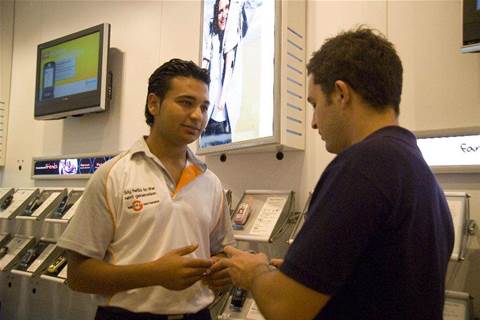In announcing its first half results today, the telco said its fiscal 2009 results "are affected by reduced call volumes as people manage their usage down more than expected in the deteriorating macro environment".
Outgoing chief executive Sol Trujillo said Telstra would look to arrest the decline with some "specifically targeted initiatives".
He did not elaborate further, citing commercial confidentiality.
PSTN revenues have been in steady decline across the telecommunications sector for some time and Trujillo wasn't keen on revealing Telstra's strategies lest its competitors co-op them, too.
"We don't talk too much about what we're going to do," Trujillo said.
"We just do it".
However, he said that Telstra needed to find "ways to stimulate more calling, terminate more calls on our network and to encourage customers to take advantage of opportunities built on our fixed and mobile networks".
Advertising, call centres and Telstra's T-Life retail stores would all have a role to play in disseminating any special offers, he said.
"We have a whole set of strategies around this that you'll see unfold as the year progresses," Trujillo said.
Trujillo, however, ruled out a multi-brand strategy to increase calls on the Telstra networks.
"It's not part of the character of Telstra," he said.
"We can add value [to our PSTN and mobile networks] by differentiating [from competitors] and stimulating behaviour we haven't seen in a while. It's not about being a low-end price facing competitor."
Trujillo said that part of Telstra's challenge in reversing its PSTN fortunes is that it's a disproportionately profitable segment of the business.
Even a small decline in numbers has a disproportionate impact on earnings figures, the carrier said.
One-off costs associated with the Victorian bushfires and Queensland floods, the continued rollout of T-Life stores, and delayed cost benefits of the continuing transformation will contribute to revenue growth in the "lower guidance" range of three to four per cent, Telstra said.
Trujillo flagged some ongoing "natural" head count reductions this year. These would mainly be in the form of contractors that were no longer required as parts of the transformation project wrap up.
Sales revenues for the first half grew by 3.2 percent or $392 million to $12,644 million. Adjusted earnings before interest and tax (EBIT) grew by $148 million to $3.23 billion. Earnings per share were down marginally to 15.5 cents.










.jpg&w=100&c=1&s=0)
_(8).jpg&w=100&c=1&s=0)







.jpg&q=95&h=298&w=480&c=1&s=1)


.jpg&q=95&h=298&w=480&c=1&s=1)


